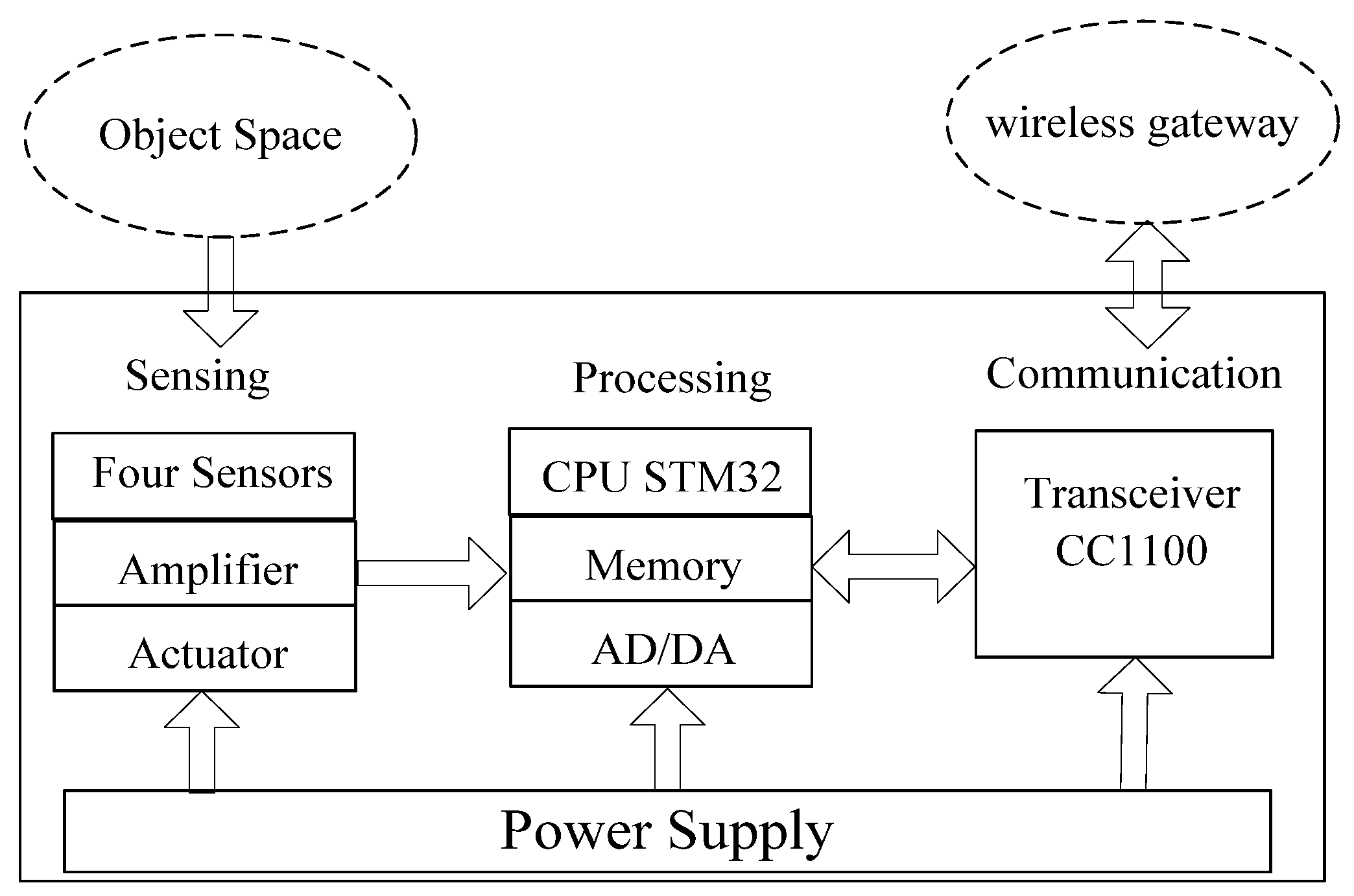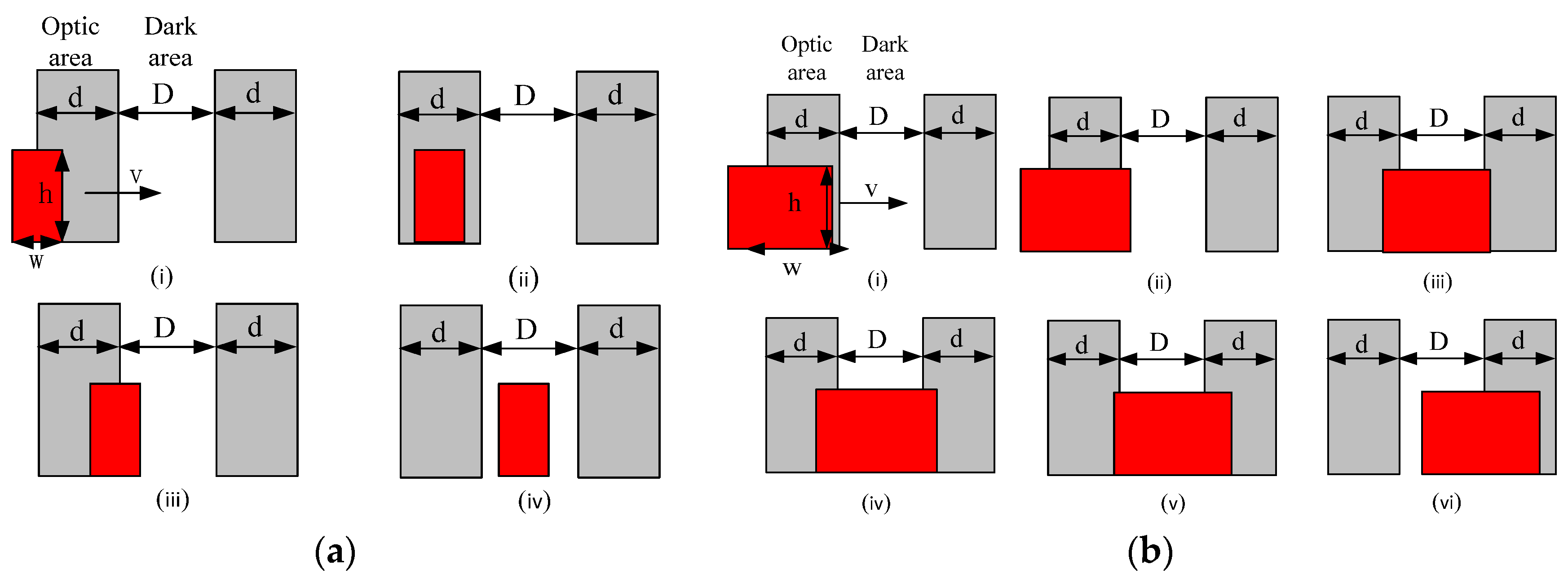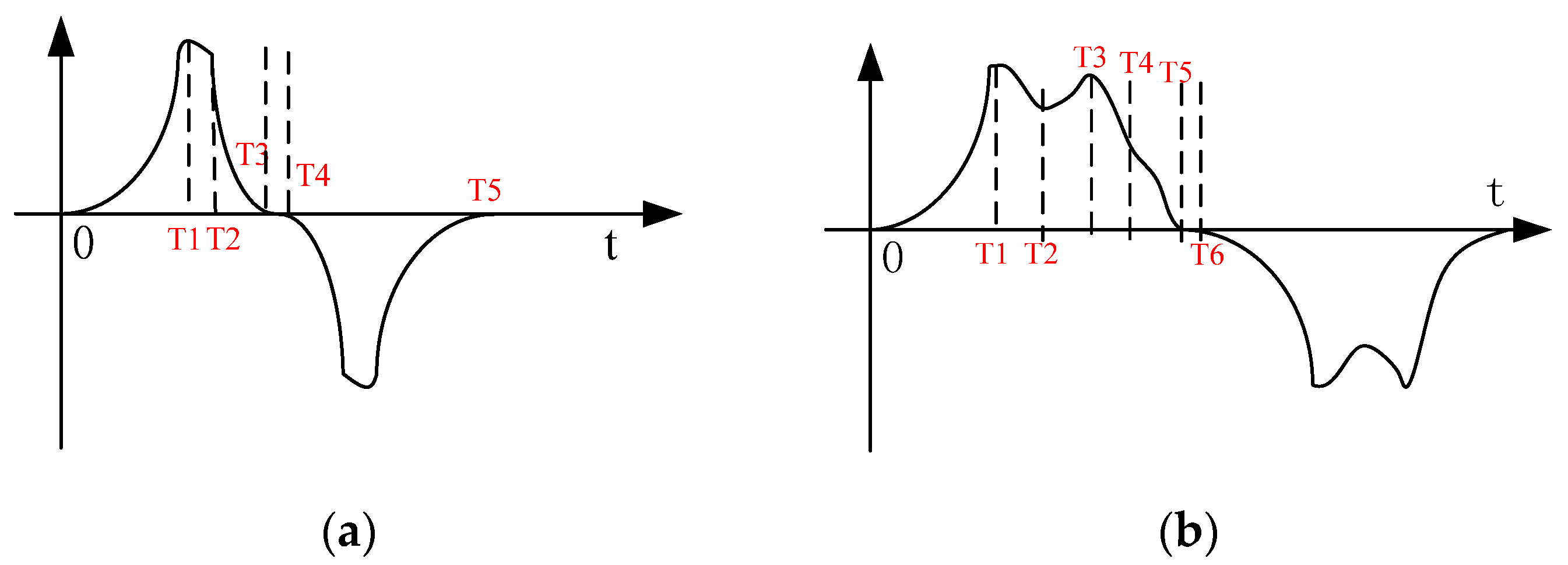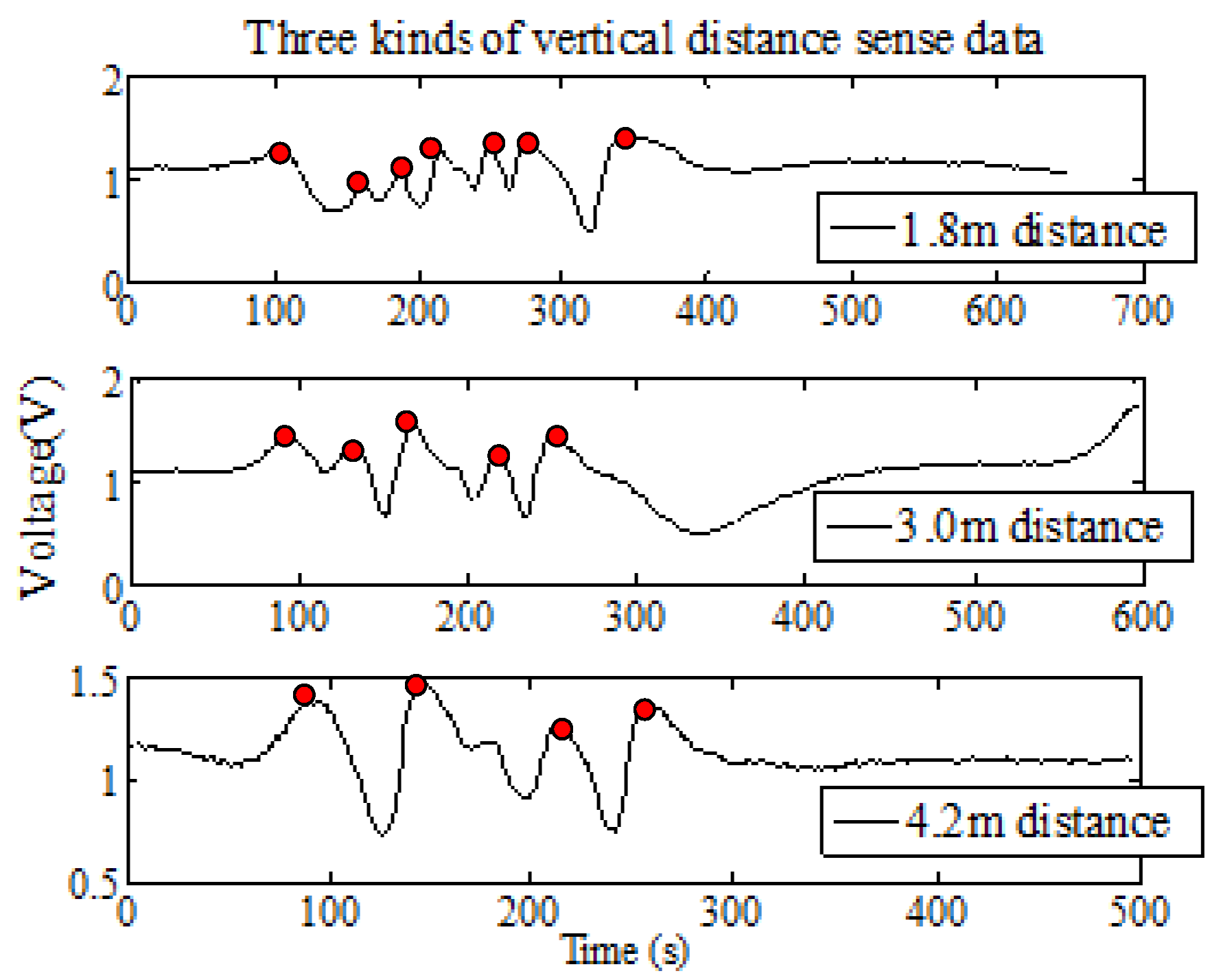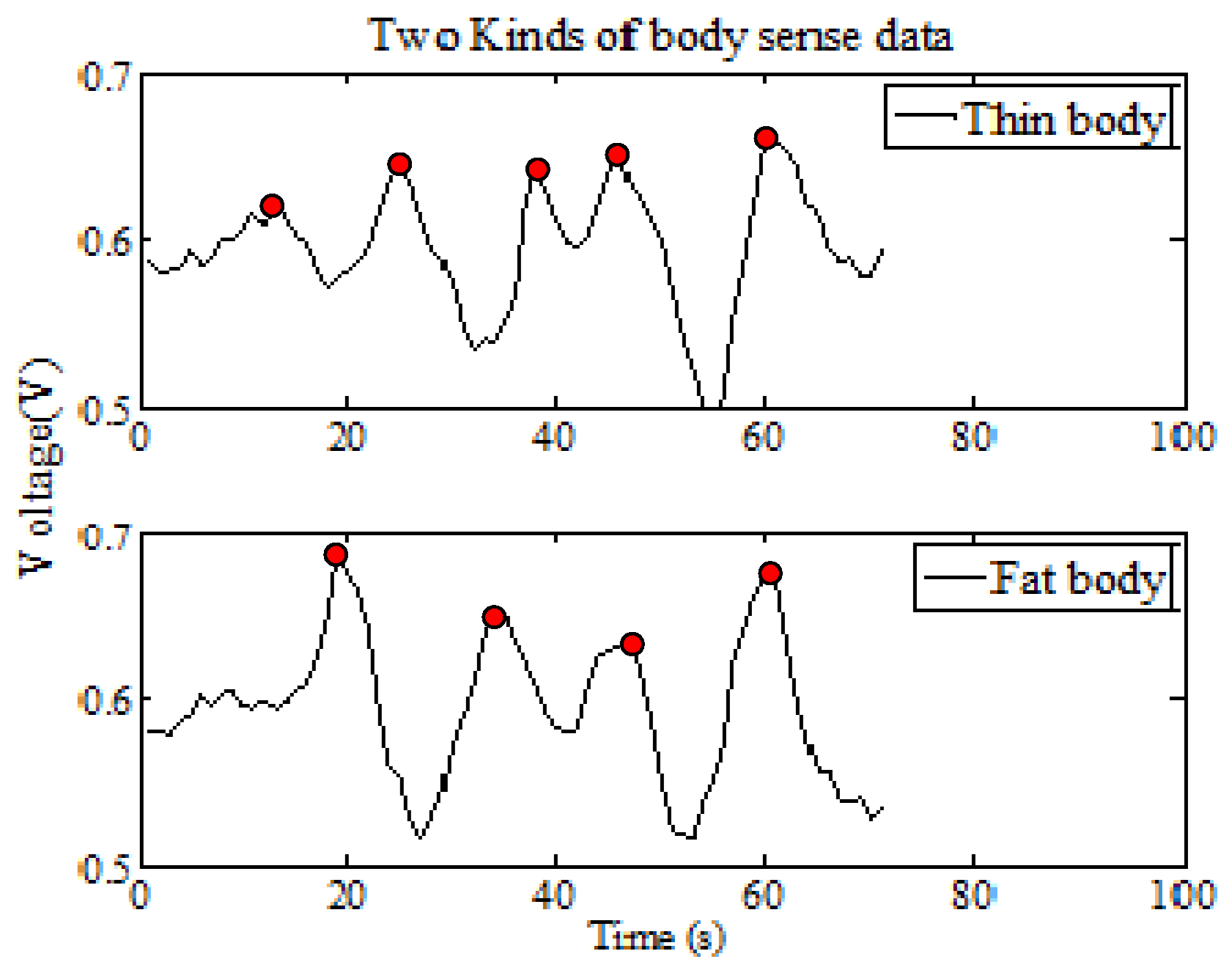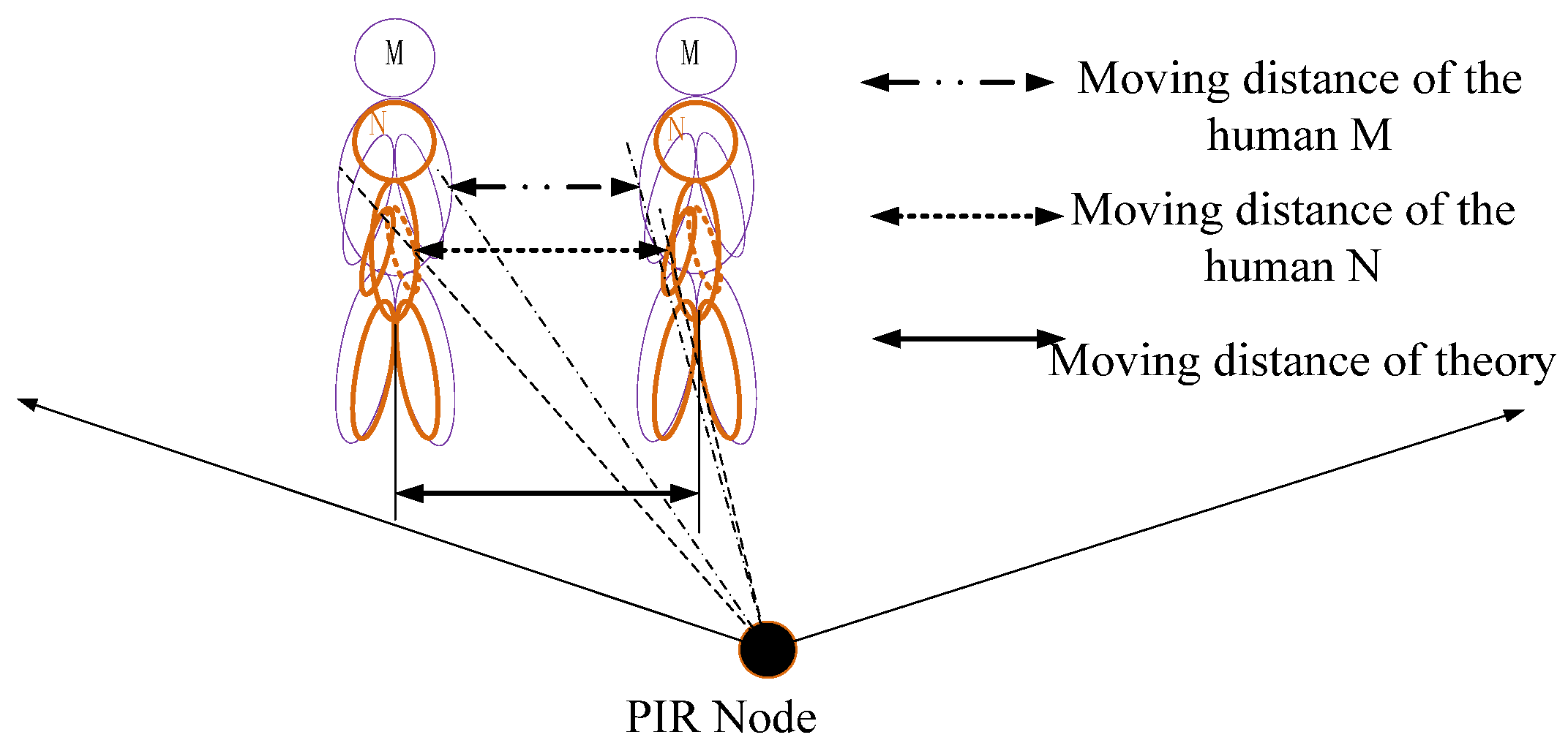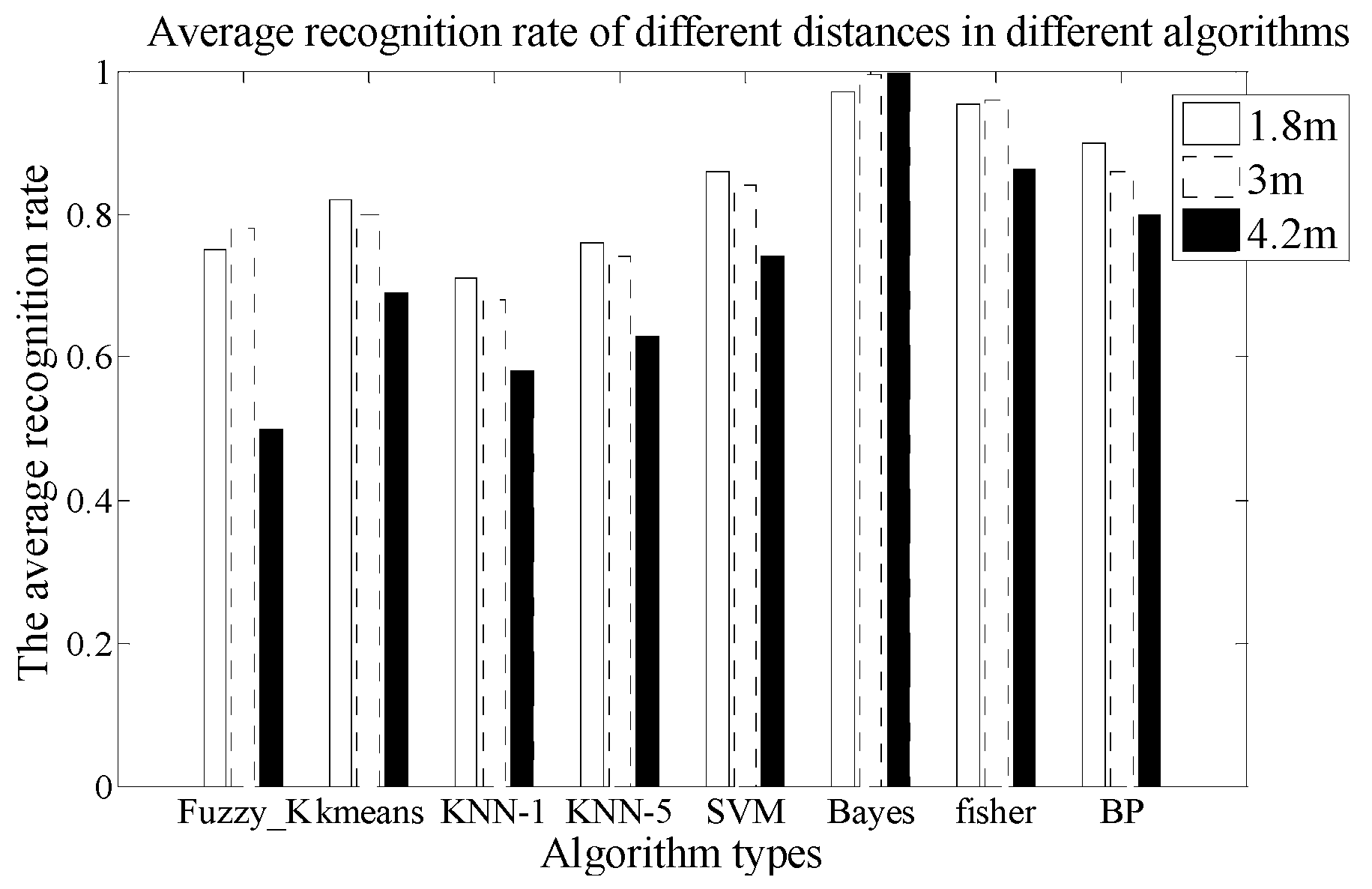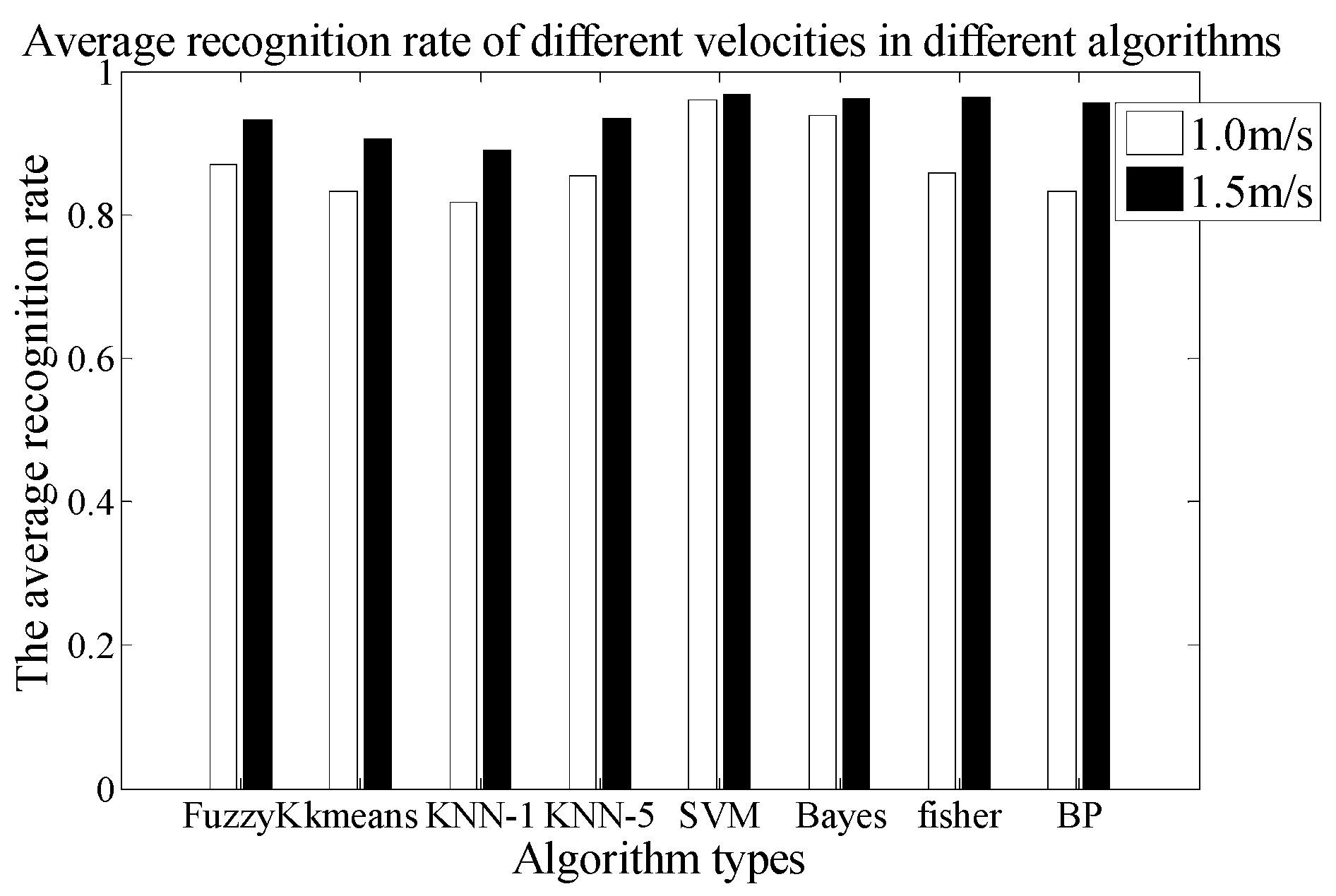There are many factors that affect human identification in a pyroelectric detection system. Based on the results of previous research, we sum up several main factors among lots of factors. At the same time, we put forward the concept of macro influence factors and micro influence factors. The macro influence factors are composed of distance between human body and PIR node (HD), body type (HS), human velocity (HV), types of Fresnel lens (F) and signal modulation mask (M). Micro influence factors are composed of the difference values of wave peak and wave valley (WR), the number of wave peaks per unit time (WN), the time of the wave peak return to the reference line (WT) and the spectrum energy in unit time (SE).
The waveform data is from thermal infrared radiation of human body, so the micro factors can affect the results of human identification. In addition, ω as the angular frequency of thermal radiation will always change in the process of human movement. When the ω changes with time, the sensed waveform will be converted to micro influence factors. Therefore, there must be some mapping relationships between the two types of influence factors. We theoretically analyze the relationship between the two types of mapping in different scenes, and construct a group of mathematical models.
2.3.1. Analysis of PIR Signal Amplitude of the Radiation Source
In
Figure 5, the human body can be approximated as a vertical cuboid radiation source, and when human comes across an optic and dark region, the sensing module will be divided into four stages as illustrated in
Figure 6a. In the first stage the human radiation source walks from a dark region to an optic region. The effective radiation region will be changed. During the second stage, as effective width of human radiation area is smaller than the width of the optic region, the human will be covered in the optic region range, and effective radiation area does not change. In the third stage, the radiation source departs from the optic region. At this time, the effective radiation area of human radiation is always in change. In the fourth stage, the radiation source is in the dark region, and the effective radiation area is gone. The effective radiation area, the change area, the velocity, the height and width of radiation source, the width of optic and dark region are S
1, ΔS
1, v, h, w, d and D, respectively. The relationship between them is given by Equation (3).
According to the principle of the pyroelectric sensor, the output of the PIR sensor is related to varied human radiation. The effective radiation source is proportional to the change with surface area of the human body. When the surface area of the human body is larger than the optic area, the effective radiation area of human body will be complicated, and we can get the diagram of a human body coming through the optic and dark regions as shown in
Figure 6b.
(1). Effective width of human radiation area is smaller than the width of the optic region:
As the amplitude of the output signal is affected by the changing thermal infrared area, the baseband output signal is determined by the optic and dark regions, resulting in that the changed amplitude will be superimposed on the baseband waveform. The waveform diagram is shown in
Figure 7a.
0-T1 stands for positive half cycle, because the expanding effective area continues to increase. In T1, the waveform is in the rising stage. In T2, because the effective radiation area does not change, the inductive electrical signal will reach balance, and the wave amplitude will decrease. In T3, the effective radiation area deceases gradually, and the waveform data declines. In T4, the effective radiation area does not change, so there is no signal. T4–T5 stand for a negative half cycle which is on the time axis of symmetry. This is because we use a dual PIR sensor, so the waveform output is in the alternate polarity.
(2). Effective width of human radiation area is larger than the width of the optic region:
In
Figure 7b it can be seen that the human body area is different, so the change in the collected energy will be different. There are some differences in the waveform details, which are reflected in the output signal. The baseband signal of the PIR sensor is decided by the PIR detector. The output signal of the PIR detector is affected by different radiation sources, which are reflected in the signal amplitude.
2.3.2. Analysis of Mapping Rule
We assume that person M and person N horizontally move the same distance, the moving distance of M is , the moving distance of N is .
The pace distance of the people is
and
respectively.
. The numbers n and m represent the number of steps. Where:
(1). The first mapping rule
In the actual application, the PIR sensor module will form an effective regular sensing region and the sensing range will be from 25°–155° (Fresnel lens is 8202-6 that called A type and the signal modulation mask has seven holes). Assuming person M and person N have a similar body type, their positions are different in the vertical distance. When they begin to walk at the same starting line and move along the same path at a constant speed, the result is that PIR sensor will generate waveform data, as shown in
Figure 8.
We assume that
and
represent moving angle of M and N.
and
represent the angle change rate, so we find:
When Δ
ti = Δ
tj,
, we can get:
As one can see from the above derivation, the farther the distance between the human and the PIR node is, the smaller ω is, meanwhile, the human passage through the intervals region of the alternate optic and dark regions will be less. The longer time between the wave peak and the reference line is, and the less detected peaks are. However, the smaller the distance between the human and the PIR node is, the more peaks are detected (the red point is a peak). Therefore, more information of the human thermal infrared signal can be obtained and the spectrum energy of the human is smaller.
Based on the above analysis and formula, we can get the first mapping rule: When the macro factor HD becomes smaller, there are four micro factors changing as follows:
The micro factor WN becomes more;
The micro factor WT gets shorter;
The micro factor WR gets smaller;
The micro factor SE becomes larger.
The ability of human identification will be enhanced.
(2). The second mapping rule
Suppose that two persons M and N have a larger distinction in body type, when they move at the same path and a constant speed. The PIR node module will obtain different characteristic data, as shown in
Figure 9 (Fresnel lens is A type and signal modulation mask has seven holes).
As shown in
Figure 10, the two body types are
and
respectively, and assuming the real movement distances of two persons are
and
, we can get the following expression:
Because Δ
ti = Δ
tj,
, we can get the following expression:
Based on the above analysis and formula, we can get the second mapping rule: when the macro factor HV becomes smaller, there are four micro factors that change as follows:
The micro factor WN becomes more;
The micro factor WT gets shorter;
The micro factor WR gets smaller;
The micro factor SE becomes larger.
The human identification ability of the pyroelectric detector system will be enhanced (Fresnel lens is A-type and signal modulation mask has seven holes).
(3). The third mapping rule
Suppose that two persons M and N have a small discrimination in their body type, and they move along the same path at a constant speed, the PIR node module will obtain different characteristic data, as shown in
Figure 11.
We assume that the
represents the velocity of
M, and
represents the velocity of
N. When
and
, we can get the expression of ω as follows:
As one can see from the above derivation, a person moves faster, and the ω is larger, thewaveform changes faster, the time between the wave peak and the reference line is shorter, so the quantity of wave peaks is larger (the red point is a peak). Therefore, the more the human thermal infrared information can be contained, and the smaller the human spectrum energy is.
Based on the above analysis and formula, we can get the third mapping rule: When the macro factor HS becomes faster, there are four micro factor changes as follows:
The micro factor WN becomes more;
The micro factor WT gets shorter;
The micro factor WR gets smaller;
The micro factor SE becomes larger.
The ability of human identification will be enhanced.
(4). The fourth mapping rule
Suppose that the two persons M and N have a similar body type. They move at the same distance at a constant speed. The PIR node will obtain different characteristic data as shown in
Figure 12 (Fresnel lens is A-type).
We designed a human thermal infrared detecting system which makes use of 8202-6 Fresnel lens. The upper lens has fourteen bigger lenses and the lower lens has fourteen smaller lenses. Visual area width is a, the distance between the PIR node and human target is
L, angle range is
θ, so we can get the following formula:
The n is the number of holes and the 2n − 1 is the total number of optic and shade zones. The W represents that the signal modulation mask has seven holes, and the V represents nine holes.
Based on the above analysis and formula, we can get the fourth mapping rule: when the macro factor M becomes higher, there are four micro factors changes as follows:
The micro factor WN becomes more;
The micro factor WT gets shorter;
The micro factor WR gets smaller;
The micro factor SE becomes larger.
The ability of human identification will be enhanced.
2.3.3. Mapping Model of Multi-Factor
Based on the above description, the pyroelectric detector system can collect different changed signals for different humans and four different conditions. We use a qualitative derivation formula, which reveals the impact of macro factors and micro factors on human identification capability. We summarize the four mapping rules between the macro and micro factors. Therefore, based on the above analysis, we can build a group of mapping mathematical models that fuse the diverse factors influencing human identification.
Table 1 lists the mathematical models of the mapping relationships between the two qualitative factors. The mapping mechanism between multiple influence factors and the methods of improving human identification ability are given in
Table 1.
We can find that if the macro factors change, the micro factors will be changed. The change between the micro factors and macro factors will have important effect on the human identification ability. Therefore, the two kinds of factor play an important role in application environment. The correctness and effectiveness of the model will be validated by experiments in the fourth section.
(1). Fast Fourier Transform and Principal Component Analysis (FFT+PCA) Feature Extraction
As the feature extraction algorithm directly affects the final recognition result, this paper uses normal algorithms for feature extraction. The sample signals are spectrum signals transformed by the Fast Fourier Transform. High spectrum dimensions can reduce classifier performance. The principal component analysis (PCA) method is adopted to reduce the dimensions of the spectrum data.
(2). Recognition Algorithm Type
We test and compare the seven classifiers: Naïve Bayes, support vector machines (SVM), Kmeans, Nearest Neighbor (K-NN), FuzzyK, Fisher and Bp. Classification of new instances is a lightweight task that can be implemented real-time on low-cost, low-power devices, thus allowing distributed implementation throughout the sensor network.


